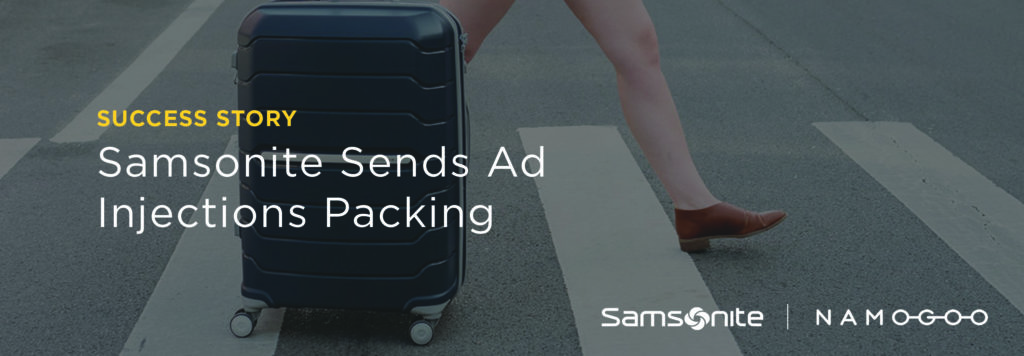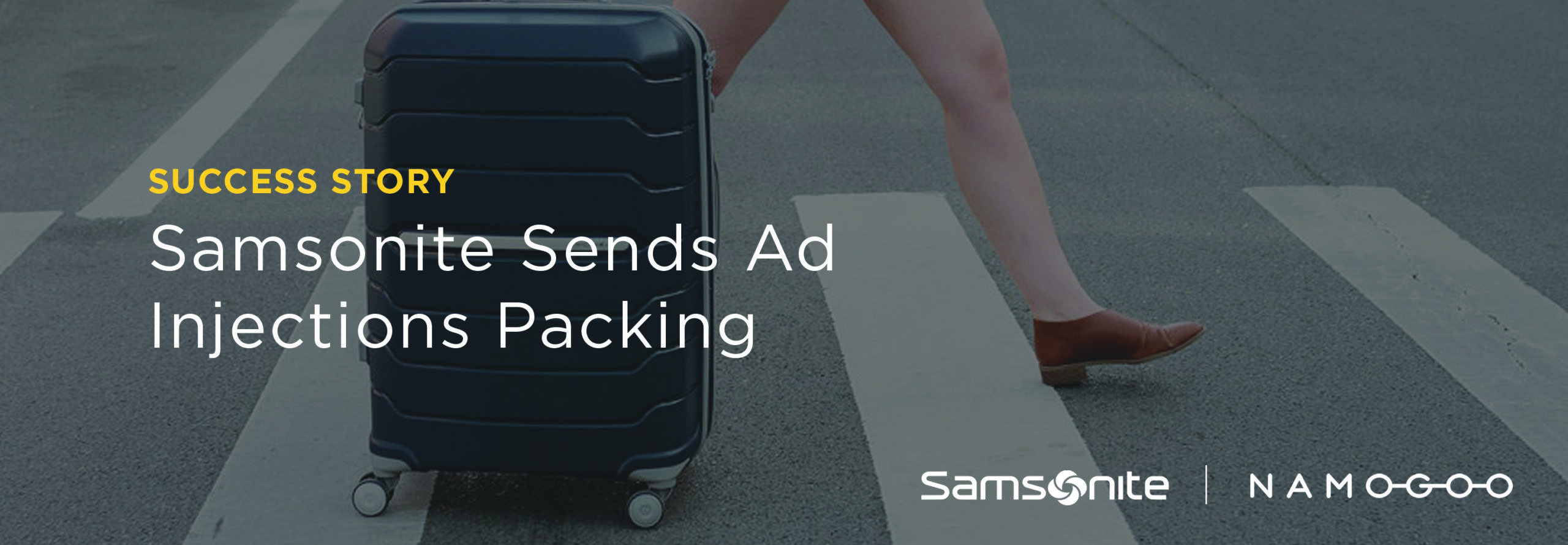In today’s business environment, it’s not unusual for anywhere from 15% to 25% of visitors to an online store to view unauthorized ads designed to steal those prospective customers away. But when Samsonite’s employees realized that 18.9% of visitors to its eCommerce store were seeing such ads – and when they realized the impact of these ads on its customer experience and bottom line – they knew they needed to act.
To put an end to the damage caused by these ads, Samsonite decided to work with Namogoo. Since then, our solution has not only increased the company’s overall online conversion rate, but also provided employees with an increased understanding of their customer base – which in turn has enabled Samsonite to boost the effectiveness of its marketing campaigns.
How has Samsonite achieved these results? That story is the subject of our newest customer success story.
The story begins in the fall of 2017, when Samsonite’s VP of eCommerce, Jay Nigrelli, decided to test Namogoo’s Customer Hijacking Prevention solution. It was then that he and his team saw first-hand what many of their customers had been seeing while visiting their website: product ads, pop-ups, and banners designed to entice those customers into clicking to be redirected to competing websites. In short, they saw Customer Journey Hijacking (CJH) in action.
“We saw ads recommending products from our direct industry competitors,” he recalls. “It’s frustrating to see this happening on our site with all the work our team puts into our customer experience.”
Since then, Samsonite has opted to block Customer Journey Hijacking in real time with Namogoo in order to keep its website’s visitors from being subjected to these ads. As a result, it has consistently achieved a 1.8% increase in its overall online conversion rate.
But the company hasn’t stopped there. Instead, working with Namogoo, Samsonite has turned the tables and actually transformed CJH from a threat into an opportunity.
Turning the tables on Customer Journey Hijacking
When we at Namogoo shared our expertise in fighting Customer Journey Hijacking with Samsonite, we explained that CJH disproportionately affects the most active online shoppers – those consumers who are most likely to convert and spend money via eCommerce. The data we have collected show that “infected” users (shoppers who are subjected to CJH) have significantly higher conversion rates than other online shoppers – even before ad injections are blocked. That’s because individuals who do more shopping online are more likely than others to unwittingly download software containing ad-injecting malware. (Of course, once injected ads are prevented from appearing, the “infected” users’ conversion rates rise even further.)
Realizing that this insight would enable Samsonite to target a particularly valuable segment of its customer base, the company’s eCommerce team began focusing its retargeting campaigns specifically on “infected” users, while also preventing these shoppers from viewing injected ads.
The results? These retargeting campaigns achieved far higher conversion rates and click-through rates than Samsonite’s average, and their return on advertising spend (ROAS) exceeded the company’s average by a whopping 141%
Today, two years after first starting to prevent Customer Journey Hijacking within its online store, Samsonite continues to block injected ads with Namogoo. Meanwhile, its team works with ours to continuously run A/B tests verifying that the company is still enjoying significantly higher eCommerce KPIs as a result of our Customer Hijacking Prevention solution.
This way, Samsonite can continue to see hard evidence showing just what an impact Namogoo makes on the company’s bottom line.
What other KPIs has Samsonite achieved with Namogoo, how has it achieved them, and what can you learn from its story? To read the full success story, click the button below.




